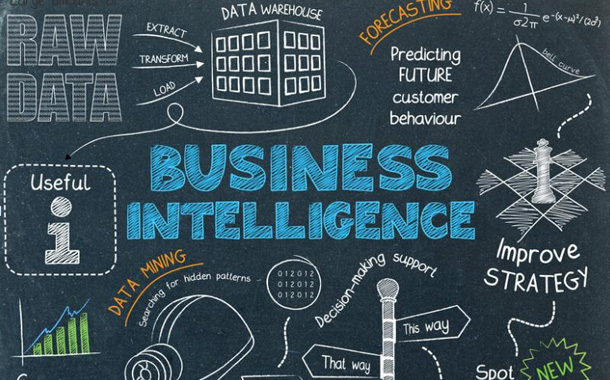Data is the new omnipresent currency in today’s digital economies, opening up the Pandora’s Box of Insights which is not just empowering businesses to better target their customers, but make more informed decisions across all facets of the business. BI technologies are not just enabling businesses and CXOs to be more efficient with their decision making, it is creating a competitive edge so critical, that an organization unable to leverage the power of insights will find it increasingly tough to survive in the increasingly data-driven world moving forward.
Data has changed the entire game for businesses the world over. Analytics-drive BI is today at the heart of technology-led transformation initiatives. Data driven technologies are opening up troves of invaluable customer data through new smart products, customer experiences, and proliferation of behavioral data. This has signaled a significant shift towards rethinking the way businesses understand their customers and employees; make decisions and better their offerings to the market.
The Evolution of Business Decision Making
Till recently, the humble spreadsheet was the only BI tool that most businesses used. That’s fast changing. CIOs and CSOs today are bent on enhancing the value they can get out of data-driven decision making, supporting other CXOs. We are at an inflection point where BI is being redefined with Narrative Sciences and AI is transforming business decision making in a much more augmented and intuitive manner. It is impacting the organization culture for managing not only their day-to-day operations, but also driving innovation through technology to favorably impact both the bottom-line and the top-line.
[quote font=”tahoma” font_size=”13″ font_style=”italic” color=”#262626″ bgcolor=”#f2f2f2″ bcolor=”#5b9cc0″]
 “A powerful BI platform is built over a robust Data Warehouse paving way for gathering a 360 view of the company there by providing multifaceted insights around performance, financial wellness etc.”
“A powerful BI platform is built over a robust Data Warehouse paving way for gathering a 360 view of the company there by providing multifaceted insights around performance, financial wellness etc.”
Jayakanthan Chidambaram
Senior Manager
BI & Analytics at Aspire Systems
[/quote]
Being a data-driven enterprise is the norm today and Business Intelligence tools are influencing the space big time. Business Intelligence helps data to transform into contextual understanding from mere numbers or statistics helping companies understand detailed sales trends and predict consumers’ behavior based on consumers’ preferences, purchasing habits, reaction to a promotion or advertisement. The analysis of such data can help businesses better plan their strategies and decide their next move to attract more customers. These comprehensive insights acquired through business intelligence tools can guide choices about company’s growth by evaluating a long-term view of the market and competition. Putting data to good use has major business benefits like reduction in costs, access to reliable and improved information, data access in real-time, universal platform-compatibility, coordination of data-models, and enhanced insight for better results. Key areas of transformation include Company 360 Degree Platform, Customer 360, Customer Persona and Segmentation, Sales & Marketing.
[quote font=”tahoma” font_size=”13″ font_style=”italic” color=”#262626″ bgcolor=”#f2f2f2″ bcolor=”#5b9cc0″]
 “Business Intelligence today is vital for any enterprise and it is going to be the future of planning any budget, exploring new opportunities and initiating new projects.”
“Business Intelligence today is vital for any enterprise and it is going to be the future of planning any budget, exploring new opportunities and initiating new projects.”
Deepak Kalambkar
IT Head and CISO
Marvel Data Services
[/quote]
The Technologies empowering BI
Data today is more proliferated than oxygen in the world of business. It is everywhere, easier and cheaper to gather and analyze. Business insights derived from data are becoming an essential part of corporate survival and success in the digital world. Retail businesses are leveraging social media and web logs from their e-commerce web sites to gather information that are not part of their enterprise data to gain insights on the customers who didn’t buy their products and analyze the reasons or feedback of the customers. Further fuelling the SMAC technology revolution are technologies like IoT and Cognitive analytics.
[quote font=”tahoma” font_size=”13″ font_style=”italic” color=”#262626″ bgcolor=”#f2f2f2″ bcolor=”#5b9cc0″]
 “We are at an inflection point where BI is being redefined with Narrative Sciences and AI is transforming business decision making in a much more augmented and intuitive manner.”
“We are at an inflection point where BI is being redefined with Narrative Sciences and AI is transforming business decision making in a much more augmented and intuitive manner.”
Sriram Narasimhan
Vice President
Cognizant Digital Business
[/quote]
Third platform technologies are providing a plethora of services under one umbrella. The cloud component helps you store information and data blurring all geographical boundaries while the Analytics helps you understand the data and form a coherent explanation. You can then leverage this information to drive the right messaging via social and mobile components. SMAC based technologies add immense value to current day business. Social – With the explosion of data transactions in social media, businesses can benefit a lot by transitioning from e-business to digital business. SMAC eco system allows the businesses to be directly in touch with end users via Social networking platforms. This helps the businesses to get feedback on their products directly from the Horses’ Mouth. The ability to extract customer feedback via sentiment analysis has empowered Businesses to get a Customer 720 Degree View which helps them understand customer behavior, customer personal preferences. This has in turn led to more new customer acquisition, deeper lead pipeline and an opportunity to constantly fine tune customer experience and satisfaction. A business focusing of deep customer and product analytics always has the edge to be a market pioneer or leader. Targeted marketing strategies are becoming a child’s play with the data available on SMAC eco systems.
[quote font=”tahoma” font_size=”13″ font_style=”italic” color=”#262626″ bgcolor=”#f2f2f2″ bcolor=”#5b9cc0″]
 “In a customer driven market like India, it is extremely significant for brands to understand what their customers’ expectations are and profile their behavior by understanding their buying trend.”
“In a customer driven market like India, it is extremely significant for brands to understand what their customers’ expectations are and profile their behavior by understanding their buying trend.”
Shrikant Vaze
Head- India GDC
Vice President Global Delivery Group
Fujitsu Consulting India
[/quote]
Where businesses are using BI today
Today BI technologies are making inroads into all aspects of business. Organizations are developing powerful 360 Degree Platforms to provide multifaceted insights from customer data. This is being leveraged in enhancing customer experience, segmentation, Sales & Marketing, increased Lead Pipeline, timing of Sales pitch, relevancy of Sales and predictability of Conversions from Lead to prospect to clients and executive Reporting and Management.
[quote font=”tahoma” font_size=”13″ font_style=”italic” color=”#262626″ bgcolor=”#f2f2f2″ bcolor=”#5b9cc0″]
 Moving forward predictive analytics will also assist businesses foreseeing the effect of various decisions and market reaction to potential new product lines.”
Moving forward predictive analytics will also assist businesses foreseeing the effect of various decisions and market reaction to potential new product lines.”
Nitin Gupta
Founder, CEO and CTO
NeuroTags
[/quote]
Another important area is Analytics-as-a-Service, to make data widely available to decision makers throughout the organization. CXOs want to focus on the ‘what of BI’ rather than not on the ‘how of BI’ when they need it. The SMAC technologies are accelerating the art of the possible in providing Analytics-as-a-Service. Areas like sales, revenue, customer engagement and employee performance management are being heavily influenced by BI technologies. Many companies globally, are using BI in segments like customer engagement, increasing revenue and sales and employee performance management. BI is helping track real time operations, monitor how well the employees are doing and if there are any areas where they can grow and can also be used to keep employees happy and appreciated for their good work.
[quote font=”tahoma” font_size=”13″ font_style=”italic” color=”#262626″ bgcolor=”#f2f2f2″ bcolor=”#5b9cc0″]
 “Today, most businesses operate data on cloud, therefore BI provides real time information of a cloud business and allows corrections necessary to keep businesses on track.”
“Today, most businesses operate data on cloud, therefore BI provides real time information of a cloud business and allows corrections necessary to keep businesses on track.”
Deepak Pargaonkar, Senior Director
Solution Engineering
Salesforce India
[/quote]
The last step in bridging the gap between insights and action and creating a pervasive data-driven decision-making culture is analytical storytelling. This means bringing data to life to tell a well-constructed narrative – one that ultimately connects with the hopes, fears and motivations of each stakeholder to encourage and guide a change in behavior. Such storytelling is enabling companies to shift from being instinct-driven to being insight-driven in their decisions.
[quote font=”tahoma” font_size=”13″ font_style=”italic” color=”#262626″ bgcolor=”#f2f2f2″ bcolor=”#5b9cc0″]
 “Generating insights for better business decisions is a critical task done by analyzing humongous volumes of data generated from multiple touch points like mobile user data or surveillance data.”
“Generating insights for better business decisions is a critical task done by analyzing humongous volumes of data generated from multiple touch points like mobile user data or surveillance data.”
Vivek Tyagi
Director of Business Development
Embedded & Enterprise
Western Digital
[/quote]
The Criticality of better decisions making in today’s competitive landscape
Organizations have started accepting the fact that data drives business. Using BI, companies can increase overall employee satisfaction, which improves productivity and performance. Any organization investing on good technology platforms to first collect correct, complete and consistent data has already won the first leg of the battle. With higher quality of data and superior technology platforms, organizations can then unleash the power of BI and analytics which have become the lifeline of organizations (read top-line, bottom-line, stakeholders, investors etc.). Insights collected via the BI and Analytics tools can help organizations to come out with product recommendations and process recommendations.
[quote font=”tahoma” font_size=”13″ font_style=”italic” color=”#262626″ bgcolor=”#f2f2f2″ bcolor=”#5b9cc0″]
 “Organizations not using BI and analytics would put them at a major disadvantage. Organizations have a huge data goldmine, and this has to be tapped to get actionable insights.”
“Organizations not using BI and analytics would put them at a major disadvantage. Organizations have a huge data goldmine, and this has to be tapped to get actionable insights.”
Aravind Natarajan
Senior Marketing Manager
Zoho Corp
[/quote]
BI has improved visibility across core business components, improves ROI and ability to achieve goals, understanding of consumer behavior, marketing and sales intelligence, and productivity. Gradually, BI has now become more embedded in business process. CFOs and CMOs are not using BI to react to business event but predict and transform a business event as it happens. Clients also have started thinking about data monetization using BI. Data created by customers through their online behavior and interactions allow companies to decode customer needs, preferences, sentiments and grievances—and to create more personalized experiences and services with data-driven business decisions.
[quote font=”tahoma” font_size=”13″ font_style=”italic” color=”#262626″ bgcolor=”#f2f2f2″ bcolor=”#5b9cc0″]
 “Without proper application of AI and BI, sustaining existing business and competing with peers will be the biggest challenge in future.”
“Without proper application of AI and BI, sustaining existing business and competing with peers will be the biggest challenge in future.”
Srinivasrao Muppaneni
CIO
The AP and Telangana State Co-op Banks
[/quote]
Accurate information gives organizations the ability to take the right decisions at the right time and for the first time has enabled measurement of the overall performance of business and identification of areas of improvement. In a customer driven market like India, it is extremely significant for brands to understand what their customers’ expectations are and profile their behavior by understanding their buying trend. Besides this, BI also allows one to predict future trends which can be a huge advantage in today’s competitive market. Organizations not using BI and analytics would put them at a major disadvantage. Organizations have a huge data goldmine, and this has to be tapped to get actionable insights.
The way forward
[quote font=”tahoma” font_size=”13″ font_style=”italic” color=”#262626″ bgcolor=”#f2f2f2″ bcolor=”#5b9cc0″]
 “Organizations are continuously searching for ways to get more value out of their data and BI provides one of the best ways to transform data sources into interactive information.”
“Organizations are continuously searching for ways to get more value out of their data and BI provides one of the best ways to transform data sources into interactive information.”
Ajay Yadav
Head IT (North)
ARIL
[/quote]
Despite the profusion of data, a number of researches suggest that CXOs do not leverage it when making key decisions. Moreover, in an increasingly complex corporate landscape there is often a communication gap between data professionals and business stakeholders. Businesses will need new business models built from analyzing your customers and business operations at every angle to really understand them – all made possible on the ground with BI and Analytics.
The trick for businesses is to sift through that data, gather useful insights and then put that data to good use. Gone are the days of running a department or company based on instinct alone. The right kind of data will improve contacts with prospective sales, prevent customer service disasters, ensure the right amount of inventory is in stock, anticipate trends, pin point profitability and bridge design gaps, all actions that will directly improve bottom line.
No matter what BI application is used, the reality is that organizations are continuously searching for ways to get more value out of their data. BI provides one of the best ways to transform data sources into interactive information that can lead to better decision making and planning. Adopting AI/BI and Analytics is the only way forward to beat the competitors. Without proper application of AI and BI, sustaining existing business and competing with peers will be the biggest challenge in future.
The entire business world is undergoing digital transformation, powered by an information backbone which fuels the data driven decision making culture. BI has been developing new revenue streams by monetizing information assets that are shared both within and outside the enterprise. Moving into future, BI will help deploy a system of intelligence to automate and improve core business processes.
In today’s digital economies, information is akin to power. A good BI strategy will be able to seamlessly cater to all the levels of the organization powering the vision of the executive team and meaningfully translating them into action items to various departments. The companies that are able to put data and insights into the hands of their people to make informed and relevant decisions that place the customer at the centre will be the ones that succeed in this new digital and data driven world.


